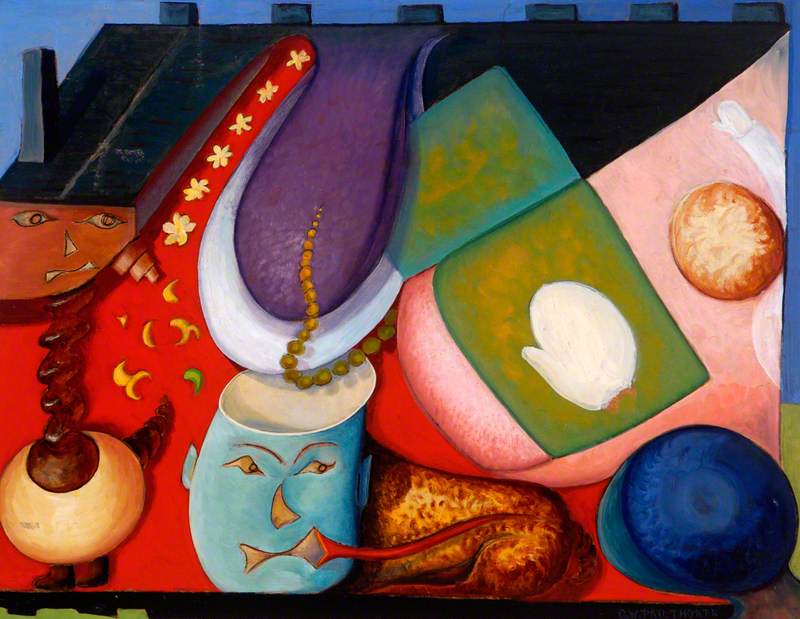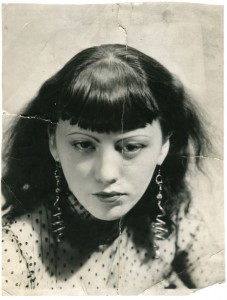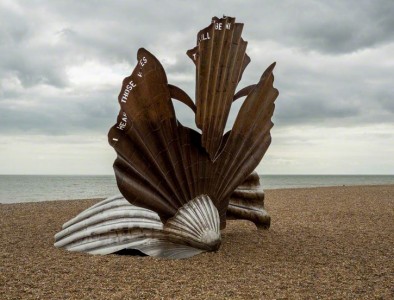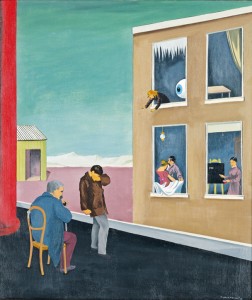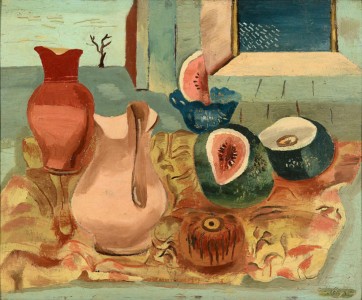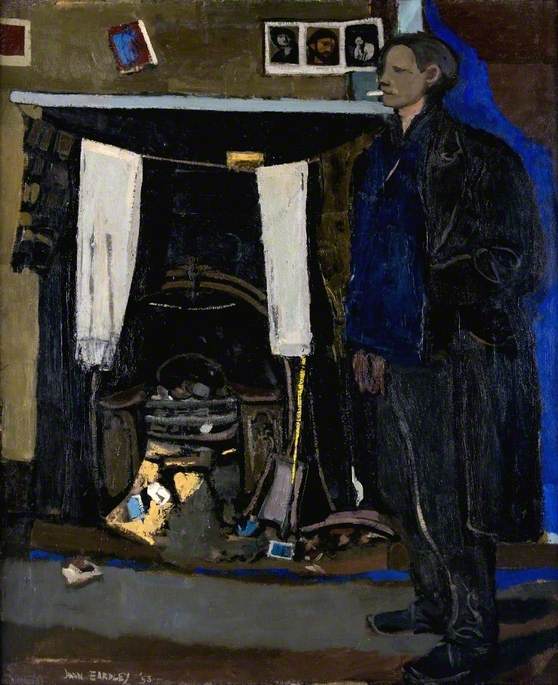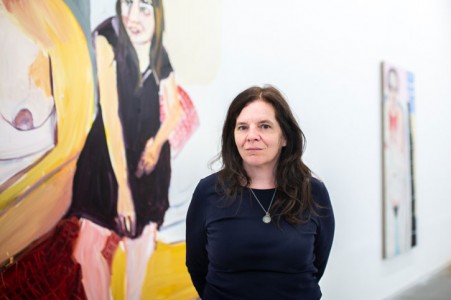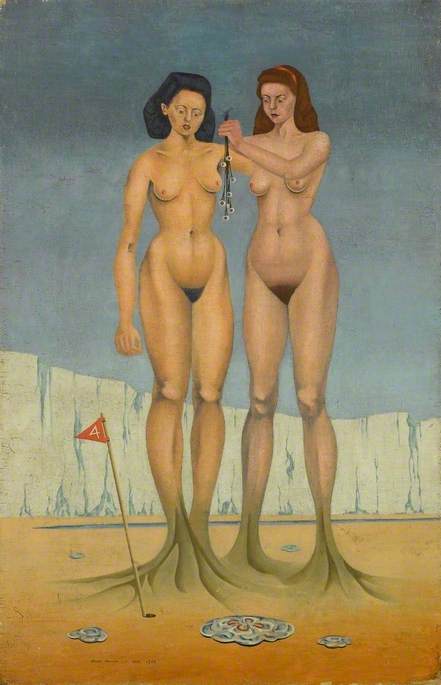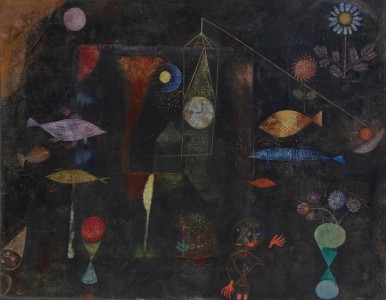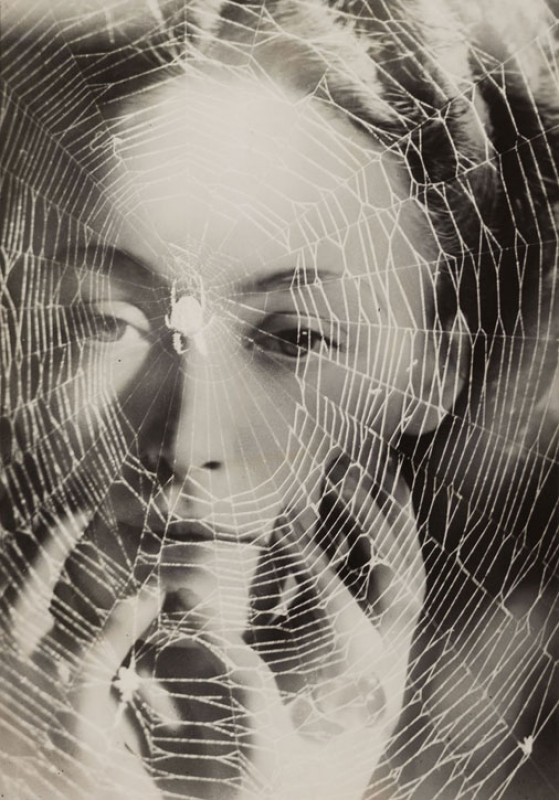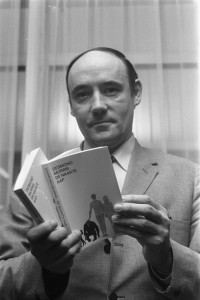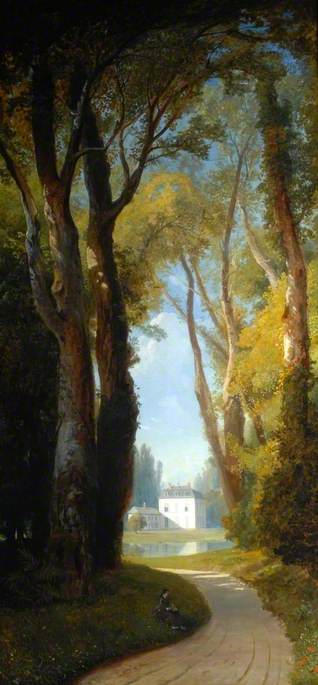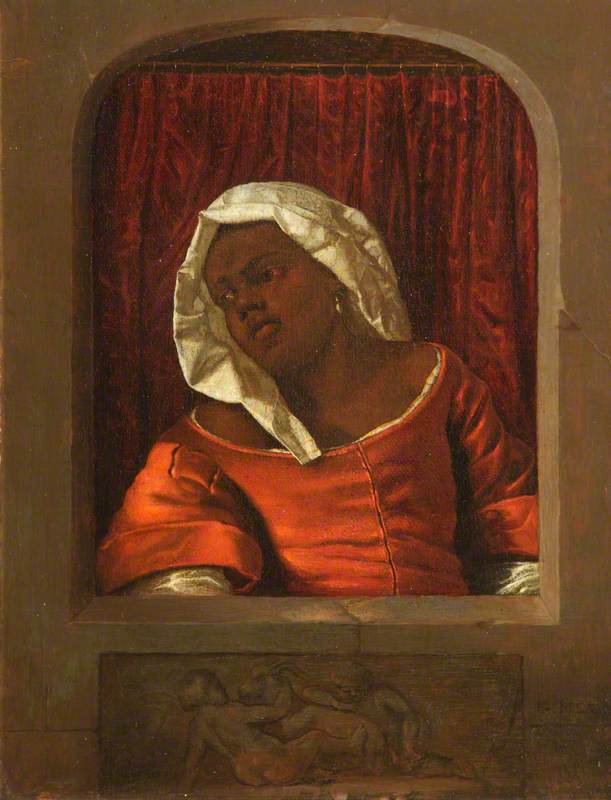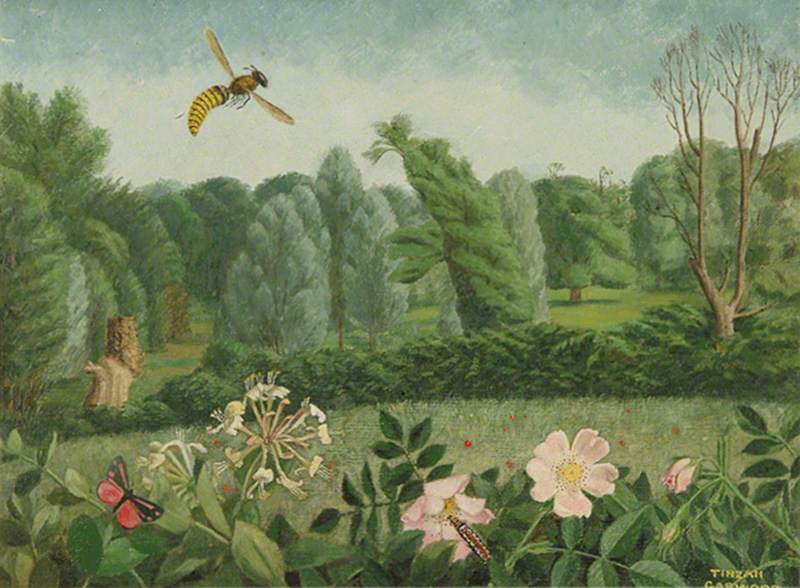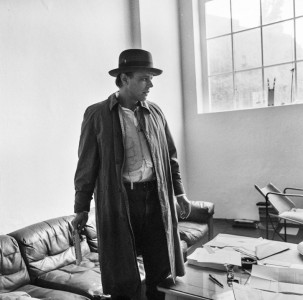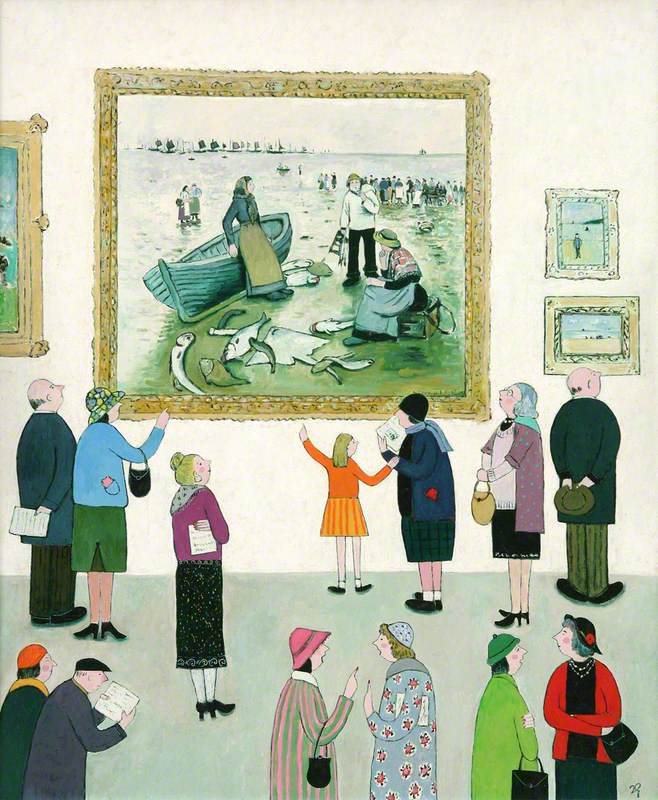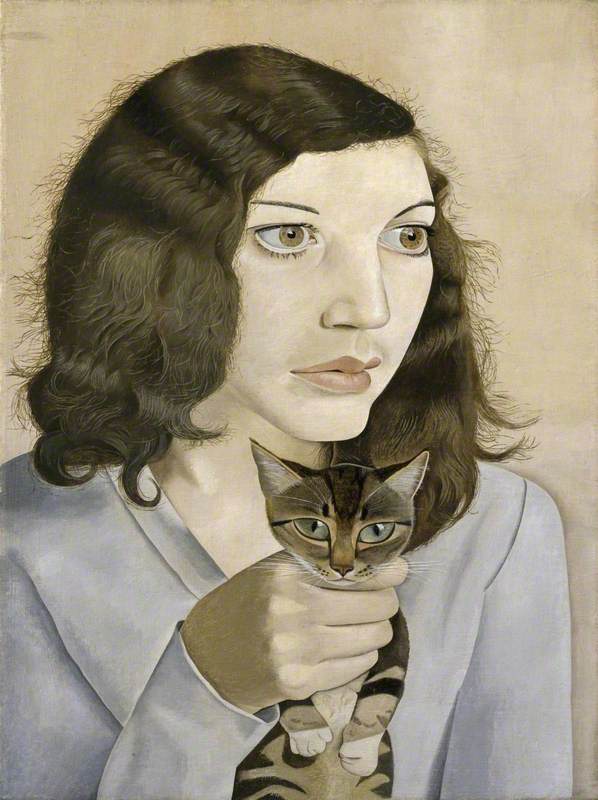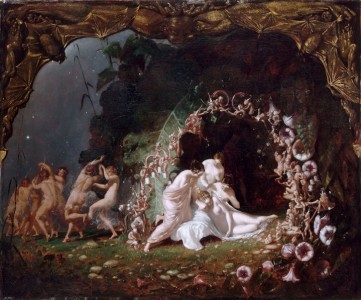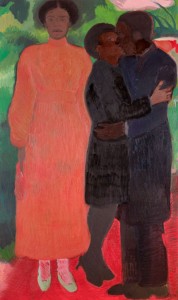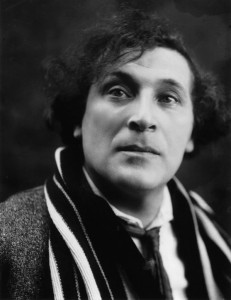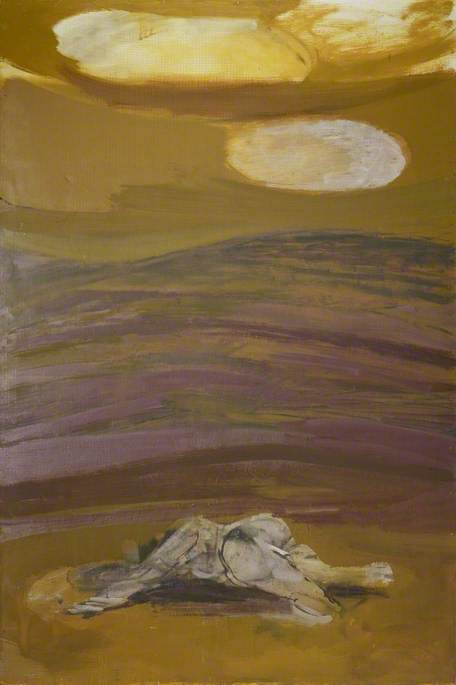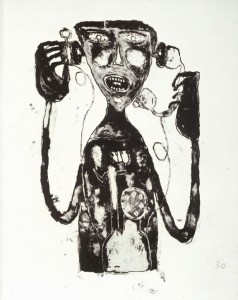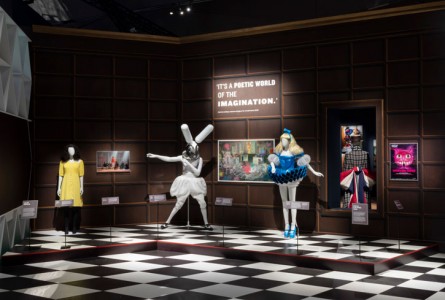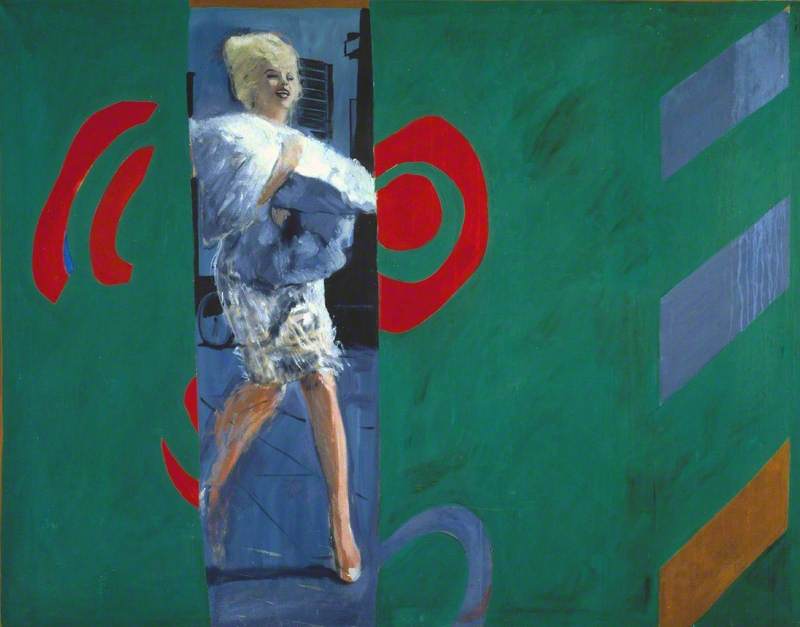The current exhibition at Bosse & Baum in South London, 'Fertile Spoon', pairs Grace Pailthorpe, the Surrealist painter and psychoanalyst, with the contemporary artist Mary Stephenson.
There are eight works by Pailthorpe, a combination of small oil paintings on canvas and watercolour paintings on paper, most of them previously unexhibited. Stephenson, who similarly works with oil paint, has utilised canvas, paper, and linen, working at various scales.

© the copyright holder. Image credit: Damian Griffiths, courtesy of Austin Desmond Fine Art and Bosse & Baum
June 3rd 1938-4
1938, watercolour on paper by Grace Pailthorpe (1883–1971)
Born over a century apart, both artists subscribe to the mysterious and intuitive logic of dreams, yielding to the power of the subconscious mind. As Chloe Nahum, who curated the exhibition in partnership with the gallery, writes in her accompanying exhibition text, 'the unconscious rules the roost, and does as it pleases with paint.'
Her phrase echoes a comment made by Pailthorpe in 1938, as part of an article she titled 'The Scientific Aspect of Surrealism', that 'the unconscious is a master in its own form of art … It tells a perfect short story'. This was published in the London Bulletin, an influential avant-garde magazine edited by the English Surrealist artist E. L. T. Messens. Her text, which was derided by the Surrealist community, detailed the experiments she was currently undertaking with the artist Reuben Mednikoff, an unconventional collaboration and life partnership they remained devoted to until her death in 1971.

Image credit: Courtesy of Bosse & Baum
Installation shot including works by Mary Stephenson and Grace Pailthorpe
Pailthorpe and Mednikoff later invented the term 'psychorealism' – a portmanteau of 'psychoanalysis' and 'surrealism' – to encompass their creative practice, in which they advanced Freudian analysis, interpreting one another's artwork through theories of repressed childhood trauma and infantile fantasies. The art historian Michel Remy has pointed out that their approach also 'broke with conventional analytical practice…[the] cross-analysis of each other and swapping of roles implied an absence of hierarchy or difference between the analyst and analysand.'
Pailthorpe – who qualified as a doctor, served as a surgeon in the First World War and trained as a criminal psychiatrist – believed their radical practice had a holistic social value and widespread philanthropic use.
In her catalogue essay for the 2018 exhibition 'A Tale of Mother's Bones: Grace Pailthorpe, Reuben Mednikoff and the Birth of Psychorealism', Hope Wolf wrote that while '[they] shared with the Surrealist Group a commitment to liberating the mind, they were also interested in the therapeutic properties of art, and insisted that their paintings and drawings should be seen as part of a scientific research project. Art, they argued in their many unpublished manuscripts, could be used to quickly excavate memories of infancy and childhood, 'vent' repressed frustrations, and achieve better self-knowledge.'
The majority of the works made by Pailthorpe being shown in 'Fertile Spoon' are related to the Birth Trauma series she made in 1938. She argued in her writing that the baby perceived birth as a form of punishment, suggesting that her own mother 'evicted her from the womb in order to punish her for kicking'.
The only girl among ten children, Pailthorpe was raised under the strict puritanical commandments of the Plymouth Brethren church. Throughout her life, she felt she was being disciplined for continually 'kicking' against convention. Nahum explains that Pailthorpe's paintings in the late 1930s and early 1940s 'fixate upon infantile concerns of feeding and bodily expulsion, physical acts which betray unconscious psychic states of loss, lust, loathing.'
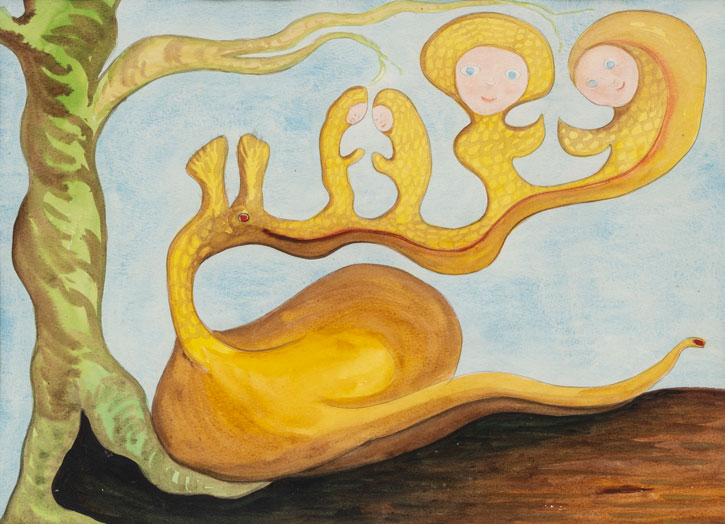
© the copyright holder. Image credit: Damian Griffiths, courtesy of Austin Desmond Fine Art and Bosse & Baum
November 18, 1937–2
1937, watercolour on paper by Grace Pailthorpe (1883–1971)
The configurations of November 18, 1937-2 and June 3rd, 1938-4, in addition to an earlier untitled drawing from the 1930s, allude to intrauterine environments, with biomorphic motifs akin to umbilical cords, eggs, sperm, and ovaries. Despite their non-realistic depiction, her professional knowledge of anatomy and the bodily organs is still palpable.
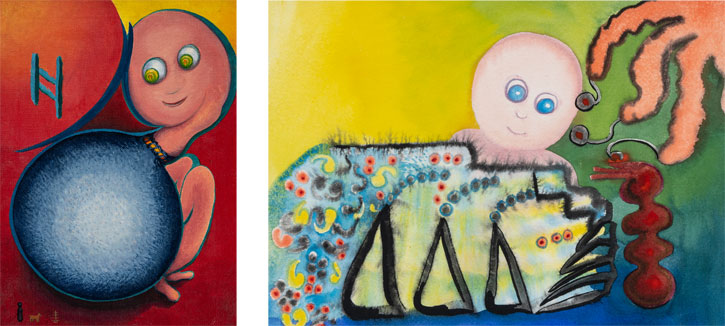
© the copyright holder. Image credit: Damian Griffiths, courtesy of Austin Desmond Fine Art and Bosse & Baum
10th December 1938 and June 15th, 1938
1938, oil on canvas and oil on watercolour by Grace Pailthorpe (1883–1971)
These shapes appear to float in their watery landscapes, clinging to each other. Pailthorpe, who worked with haste, simply titled her paintings after the date that they were made. Both June 15 1938 and 10th December 1938 show smiling, bashful and blushed foetuses, with wide, cartoonish blue eyes.
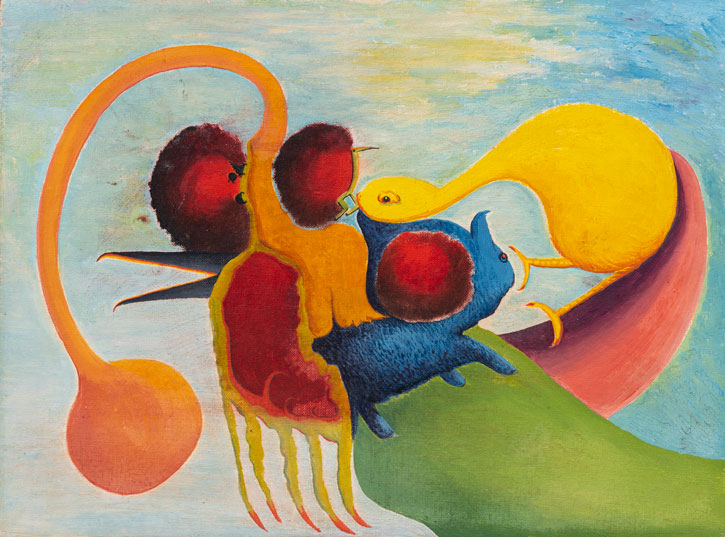
© the copyright holder. Image credit: Damian Griffiths, courtesy of James Birch and Bosse & Baume
2nd of May 1941 No.25
1941, oil on canvas board by Grace Pailthorpe (1883–1971)
In 2nd May 1941 No.25, the work becomes more abstract, but these shapes still appear to clasp, suck on, and hold each other: they are separate parts but they are tethered to one system.
Pailthorpe's dominant use of cerulean blue, dusky pink, vermillion, and mustard yellow is mirrored by the palette of Stephenson's paintings, favouring the same hues. Nahum writes that she similarly works at speed, 'attempting to record fleeting imagery and colours that she meets in her mind's eye.'

© the artist. Image credit: Courtesy of Bosse & Baum
Blue Jug
2020, oil on canvas by Mary Stephenson (b.1989)
When read collectively, the short titles of her paintings assume the timbre of a brisk word association game: Napkin; Salt; Long Hair; Foil Swan. Others are linked to their dominant colour: Blue Jug; Red Slice; Red Bow. These descriptions are red herrings, however. There is no jug to be found in Blue Jug, rather Stephenson conjures a dysfunctional party scene, which appears to take place at the bottom of a swimming pool, with individuals clad in bathing costumes and swim caps, their smacking and puckered lips coated with red lipstick.
Complete with bar tables covered in white linen tablecloths, a perverse selection of cucumbers, lemons, wine, live fish, and seashells are kept under the decorative glass domes commonly seen on cake stands. The idiosyncratic guise of the protagonists, in their taut hats (seen again in Blue Stream) are akin to the Pierrot figure, reminiscent of Edward Hopper's Soir Bleu (1914), where he uses theatrical pathos of the clown as a symbolic placeholder for alienation and isolation.
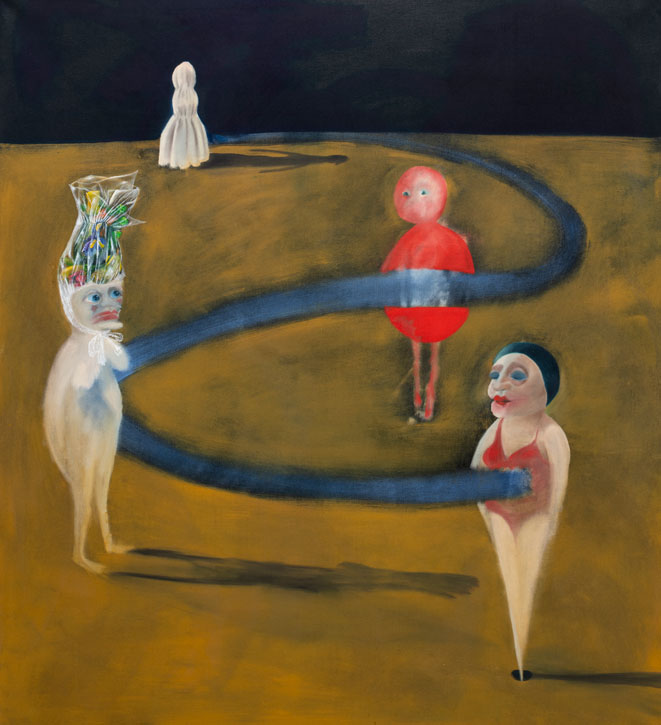
© the artist. Image credit: Courtesy of Bosse & Baum
Blue Stream
2020, oil on canvas by Mary Stephenson (b.1989)
Her characters are amorphous, semi-human, their limbs seem to narrow with elongated fingers, or peter into wisps of smoke. Hair becomes stretched, a blurred waterfall. Their expressions are melancholic, with Stephenson favouring downturned mouths. They are often in a state of sleep, their eyes closed, as if the depicted images the viewer sees are being conjured from their reverie.
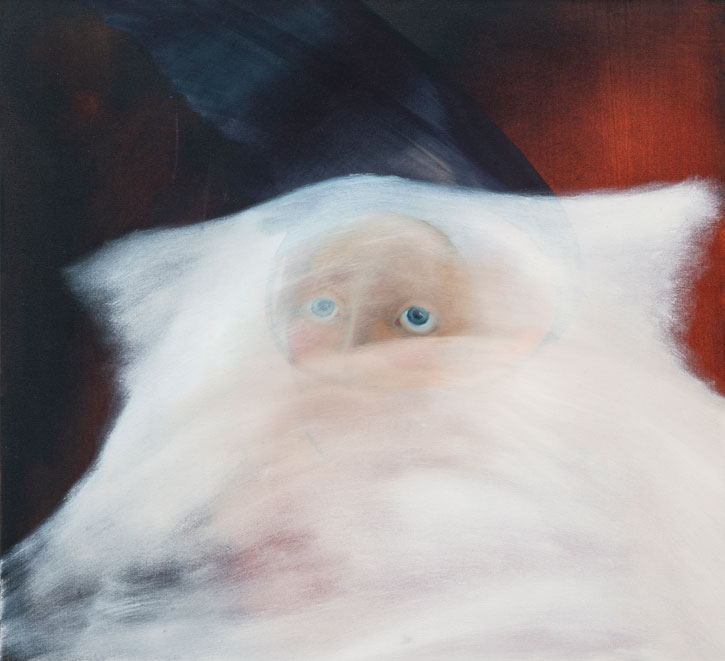
© the artist. Image credit: Courtesy of Bosse & Baum
White Linens II
2020, oil on canvas by Mary Stephenson (b.1989)
In White Linens II, a pair of eyes is seen peeping, propped up against a white pillow and translucent bed sheets. '[Stephenson] speaks of the unconscious as a trickster adopting many disguises, goading and yet evading capture,' Nahum continues. '[She] is concerned with the way that the unconscious colours the waking world, clinging like a gauze which both obscures and reveals physical reality.'
Philomena Epps, writer
